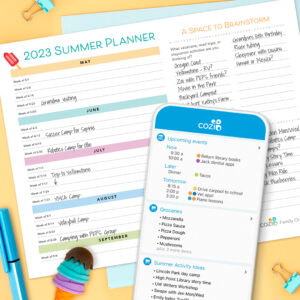As a stay-at-home parent, managing finances can be a daunting task. With the responsibilities of caring for your children, managing the household, and maintaining a social life, it’s easy to overlook the importance of financial planning. However, neglecting your financial well-being can have long-term consequences on your family’s financial stability and security. In this article, we’ll explore the essential tips and strategies for stay-at-home parents to manage their finances effectively, ensuring a harmonious and secure financial future for their family.
Understanding Your Financial Situation
Before creating a financial plan, it’s crucial to understand your current financial situation. Take some time to gather all your financial documents, including:
- Pay stubs
- Bank statements
- Credit card statements
- Loan documents
- Insurance policies
Organize these documents and categorize them into income, expenses, debts, and assets. This will give you a clear picture of your financial situation, enabling you to make informed decisions.
Creating a Budget
A budget is a vital tool for managing finances. As a stay-at-home parent, your budget should prioritize your family’s needs and goals. Allocate your income into the following categories:
- Essential Expenses:
- Housing (rent/mortgage, utilities, maintenance)
- Food and groceries
- Transportation (car payment, insurance, gas)
- Insurance (health, life, disability)
- Minimum debt payments (credit cards, loans)
- Non-Essential Expenses:
- Entertainment (dining out, movies, hobbies)
- Travel
- Personal spending (clothing, accessories, gadgets)
- Savings and Debt Repayment:
- Emergency fund
- Retirement savings
- Debt repayment (credit cards, loans)
- Discretionary Spending:
- Hobbies
- Home improvement
- Gifts
Managing Debt
As a stay-at-home parent, it’s essential to prioritize debt repayment. Focus on paying off high-interest debts, such as credit cards, as soon as possible. Consider the following strategies:
- Snowball Method: Pay off debts with the smallest balances first, while making minimum payments on other debts.
- Avalanche Method: Pay off debts with the highest interest rates first, while making minimum payments on other debts.
- Debt Consolidation: Combine multiple debts into a single loan with a lower interest rate and a single monthly payment.
Building an Emergency Fund
An emergency fund is crucial for unexpected expenses, such as car repairs or medical bills. Aim to save 3-6 months’ worth of living expenses in a readily accessible savings account.
Investing and Retirement Planning
As a stay-at-home parent, it’s essential to prioritize retirement planning. Consider the following strategies:
- Employer-matched retirement accounts (401(k), IRA)
- Individual retirement accounts (Roth IRA, traditional IRA)
- Annuities or other investment products
Tax-Advantaged Savings
Take advantage of tax-advantaged savings options, such as:
- 529 College Savings Plan: Save for your children’s education expenses while reducing your tax liability.
- Health Savings Account (HSA): Contribute pre-tax dollars to a HSA for medical expenses, reducing your taxable income.
Financial Planning Tools and Resources
Stay organized and informed with the following financial planning tools and resources:
- Budgeting apps (Mint, You Need a Budget, Personal Capital)
- Financial planning software (Quicken, NerdWallet)
- Online financial communities and forums
- Financial advisors or planners
Conclusion
As a stay-at-home parent, managing finances requires discipline, patience, and a clear understanding of your financial situation. By creating a budget, managing debt, building an emergency fund, investing, and taking advantage of tax-advantaged savings options, you’ll be well on your way to achieving financial harmony and security for your family. Remember to stay organized, informed, and proactive in your financial planning, ensuring a brighter financial future for your loved ones.












